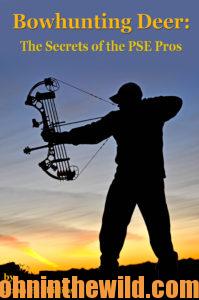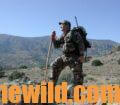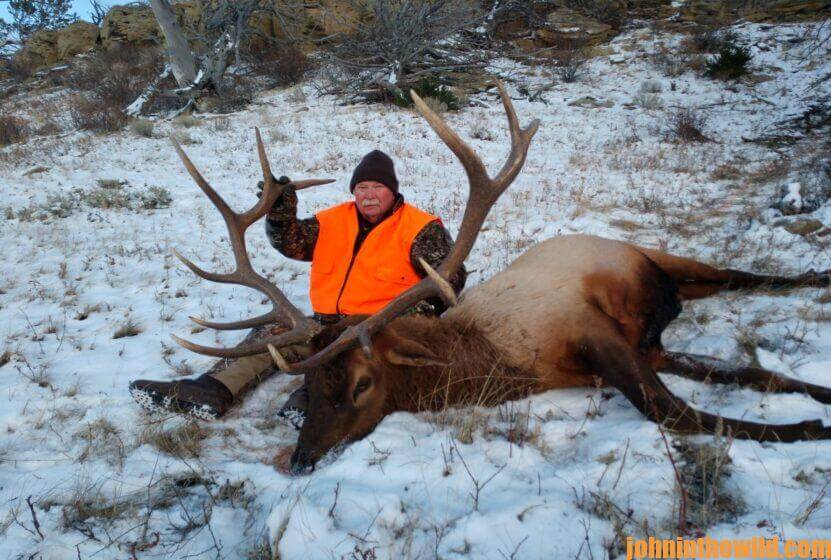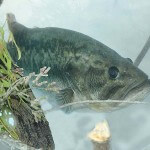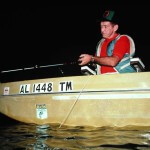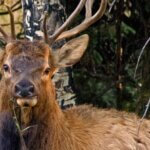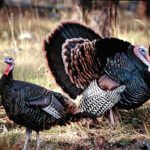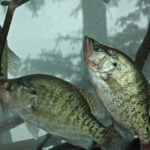Editor’s Note: An elk hunt, especially a mountain elk hunt, is the hunt of a lifetime for many folks. Nothing’s more beautiful than getting above the clouds and looking at the beauty of a mountain range for as far as you can see. However, I wish I had known several things before I went on my first elk hunt that will help you if you’re hiking and/or climbing mountains to reach your elk or mule deer to hunt.
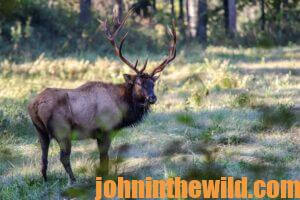
You always should talk to your outfitter and preferably the guide you’ll be hunting with before you go elk hunting the first time, or at least talk to a buddy who has been before. The first thing they’ll tell you is to, “Get in shape.” But no one really tells you what, “Get in shape,” means. Most of us think that means hiking often before the hunt, climbing stadium steps, hiking up steep hills or running until you are nearly out of breath. All of those things are important to your health and can and will help you. However, what hunters and guides don’t tell you, maybe because they just don’t know, is that the first two days of an elk hunt you’ll feel like you’re breathing through a straw. That air at a higher altitude is much thinner than at sea level. Therefore, most hunters from the East when they go on their first elk hunts to the West, will be short of air, more fatigued much quicker and not be in as good of a physical condition as they had thought.
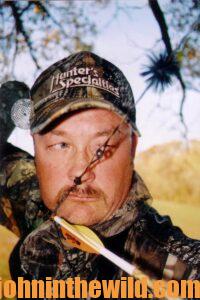 As I was side-hilling with my guide up the side of a mountain in about a foot of snow on my first elk hunt, we only had walked about two hours when suddenly, I was face down in the snow. My guide, seeing my predicament, came running back to me. When I pulled my face out of the snow, he asked, “Are you okay?” I looked at him, cleaned the snow off my glasses and said, “Oh, yeah! From the waist up I’m running, but from the waist down, my legs are refusing to go. Now we can do one of two things here. You can keep going up the mountain and believe I’ll catch up to you sometime, but that’s not a safe bet. Or, we can go at my pace, and if we do find an elk, I’ll be with you, and we can take the shot.” My guide laughed. I soon learned that although the Good Lord gave the folks out West those beautiful mountains, I think it was a payback for not giving them enough air on those mountains.
As I was side-hilling with my guide up the side of a mountain in about a foot of snow on my first elk hunt, we only had walked about two hours when suddenly, I was face down in the snow. My guide, seeing my predicament, came running back to me. When I pulled my face out of the snow, he asked, “Are you okay?” I looked at him, cleaned the snow off my glasses and said, “Oh, yeah! From the waist up I’m running, but from the waist down, my legs are refusing to go. Now we can do one of two things here. You can keep going up the mountain and believe I’ll catch up to you sometime, but that’s not a safe bet. Or, we can go at my pace, and if we do find an elk, I’ll be with you, and we can take the shot.” My guide laughed. I soon learned that although the Good Lord gave the folks out West those beautiful mountains, I think it was a payback for not giving them enough air on those mountains.

Another elk guide told me much later, “You can be a marathon runner, a body builder and/or play football, basketball or tennis all your life, but the one thing you can’t do is quickly adjust to the lack of oxygen you can take-in when you’re hunting at altitudes. The only way to become accustomed to the altitude is to spend two or three days hiking-up high mountains. Then you’ll be ready to go on your elk hunt.” I wish someone had told me, “Go to elk camp two or three days before you start to hunt. Climb up to the elevation you’ll be hunting twice each day, and your elk hunt later will be much easier.”
 On my first turkey hunt for Merriam’s gobblers that live in the mountains out West, my guide and I heard a turkey gobble. I took off running like I would in Alabama where I live when I hear a turkey gobble to cut the distance to get close enough to call him quickly. After about a 70-yard sprint, I was down on my hands and knees, breathing like a hot dog running in the summertime. I had to be reminded by my guide that, “Mr. John, we’ll get to that turkey a lot quicker if you’ll walk a little slower.”
On my first turkey hunt for Merriam’s gobblers that live in the mountains out West, my guide and I heard a turkey gobble. I took off running like I would in Alabama where I live when I hear a turkey gobble to cut the distance to get close enough to call him quickly. After about a 70-yard sprint, I was down on my hands and knees, breathing like a hot dog running in the summertime. I had to be reminded by my guide that, “Mr. John, we’ll get to that turkey a lot quicker if you’ll walk a little slower.”
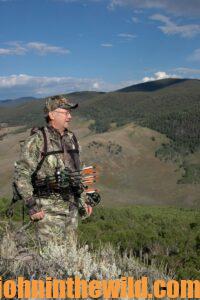
A product on the market today that may help you get over altitude sickness is called Boost Oxygen (available at Walgreen’s and Amazon). It comes in an aluminum can that weighs less than 1 pound, features a mask that covers your nose and mouth and has a trigger under the mask. When you squeeze the trigger, you get a full breath of 95% oxygen. After about three breaths of that oxygen, you’ll be ready to hike up the mountains again. If you watch football players on television, especially the running backs, wide receivers and linemen, you’ll notice that as soon as they come off the field, they put masks over their noses and breathe in oxygen to speed-up their recovery times and enable them to go back into the game for the next set of downs. Boost Oxygen can make your elk hunt to the high mountains much easier and comfortable and allow you to keep climbing after about three to four breaths of that oxygen faster than you’ll recover sitting on a rock and panting like a dog until you feel ready to go again. (Do check guidelines about packing Boost in your luggage when you fly).
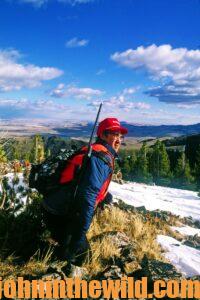 My friend Alex Rutledge, whose podcast is “American Roots Outdoors with Alex Rutledge and Friends,” https://americanrootsoutdoors.com/ started elk hunting and guiding elk hunters in 2008. He’s taken six bull elk. He read everything he could about getting in shape for elk hunting before going. On his first elk hunt, he got out of his truck in front of the lodge, and all the other hunters and guides were at the skinning shed, about 200 yards from his truck. “Before I could reach the skinning shed, I thought I would pass out. The elevation was about 9,000 feet above sea level. I’m from Missouri where the land is flat. At first, I thought I was really sick. I didn’t know what was happening. But then I realized my body was trying to adapt to that big altitude change.
My friend Alex Rutledge, whose podcast is “American Roots Outdoors with Alex Rutledge and Friends,” https://americanrootsoutdoors.com/ started elk hunting and guiding elk hunters in 2008. He’s taken six bull elk. He read everything he could about getting in shape for elk hunting before going. On his first elk hunt, he got out of his truck in front of the lodge, and all the other hunters and guides were at the skinning shed, about 200 yards from his truck. “Before I could reach the skinning shed, I thought I would pass out. The elevation was about 9,000 feet above sea level. I’m from Missouri where the land is flat. At first, I thought I was really sick. I didn’t know what was happening. But then I realized my body was trying to adapt to that big altitude change.
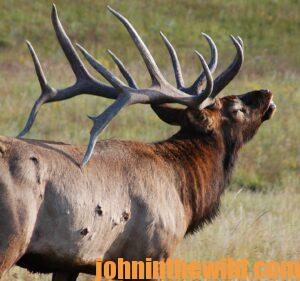 “Today I know I have to be physically in shape to go elk hunting. To accomplish that goal, prior to my hunt, I drink nothing but water. I take aspirin the week before I go elk hunting to thin my blood and cause me not to need as much oxygen at high altitudes. (Be sure to check with your doctor first.) I know that aspirin will keep my blood pressure low and help to slow my heart rate. I also do lots of exercise and have my body in shape, from the first of July until the first elk hunt in September. Today I realize that if you come from lowlands like me, you’ll need at least two days for your body to acclimate to the altitude change, so you can hunt like the guides hunt.”
“Today I know I have to be physically in shape to go elk hunting. To accomplish that goal, prior to my hunt, I drink nothing but water. I take aspirin the week before I go elk hunting to thin my blood and cause me not to need as much oxygen at high altitudes. (Be sure to check with your doctor first.) I know that aspirin will keep my blood pressure low and help to slow my heart rate. I also do lots of exercise and have my body in shape, from the first of July until the first elk hunt in September. Today I realize that if you come from lowlands like me, you’ll need at least two days for your body to acclimate to the altitude change, so you can hunt like the guides hunt.”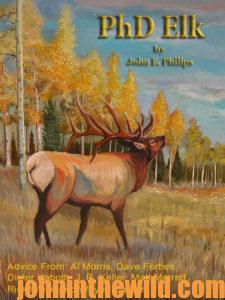
To learn more about hunting elk successfully, check out John E. Phillips’ book, “PhD Elk: How to Hunt the Smartest Elk in Any State,” available in Kindle, print and Audible at
(https://www.amazon.com/dp/B0087S2RQM). To learn more about mule-deer hunting, look at John E. Phillips’ book, “Mule Deer Hunter’s Bible,” available in Kindle, print and Audible at https://amzn.to/2Kg62w5. Also, see “Bowhunting Deer: The Secrets of the PSE Pros,” now available as of mid-October, 2022, in Kindle, print and Audible at https://www.amazon.com/gp/product/B0BKBKKM9T/ref=dbs_a_def_rwt_hsch_vapi_taud_p3_i2. 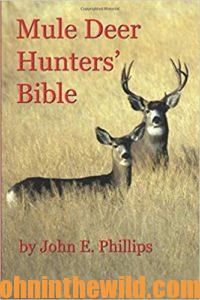 You may have to copy and paste these clicks into your browser. When you click on the books, notice on the left where Amazon allows you to read and hear 10% of the books for free. On the right side of the page and below the offer for a free Audible trial, you can click on Buy the Audible with one click.
You may have to copy and paste these clicks into your browser. When you click on the books, notice on the left where Amazon allows you to read and hear 10% of the books for free. On the right side of the page and below the offer for a free Audible trial, you can click on Buy the Audible with one click.